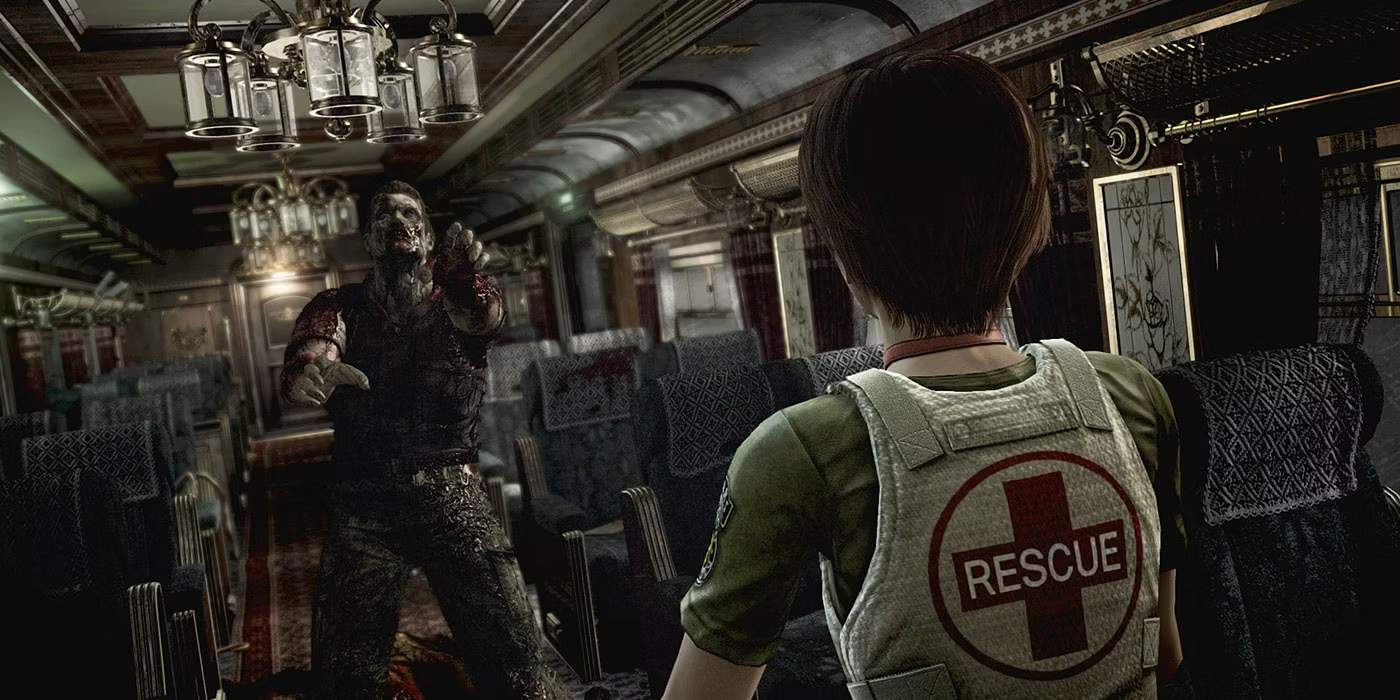Since the very first game in the series, the Resident Evil franchise is practically synonymous with challenging the player. In fact, the whole purpose of the survival-horror genre (something which the original Resident Evil would coin the term for despite not technically being its first game) is to make the player feel powerless in the face of nearly insurmountable odds. The term “survival-horror” indicates that survival is a core part of the experience, with scarcity of resources and increasingly challenging enemies forcing the player to engage with their sympathetic nervous system’s “fight-or-flight” response, resorting to strategic retreat when the odds seem stacked against the player and that all-too-important “survival” component becomes less likely. Accordingly, ranking the Resident Evil games from easiest to hardest is almost as much of a challenge as the games themselves.
While the initial trilogy of Resident Evil games would largely follow the same formula while expanding on the elements that improve the core experience, the second trilogy of titles in the franchise would venture down a decidedly different path. Beginning with Resident Evil 4, the franchise would continue to veer closer and closer to full-on action game territory, and in the process the mainline entries in the series would begin to have little evidence of there being any significant component representing either “survival” or “horror”. Thankfully, the series’ soft-reboot in Resident Evil 7: Biohazard and the remakes of the classic games in the series all adhere closely to the template that makes the franchise so legendary in the first place, resulting in some truly white-knuckle experiences not for the feint of heart.
14. Resident Evil 6
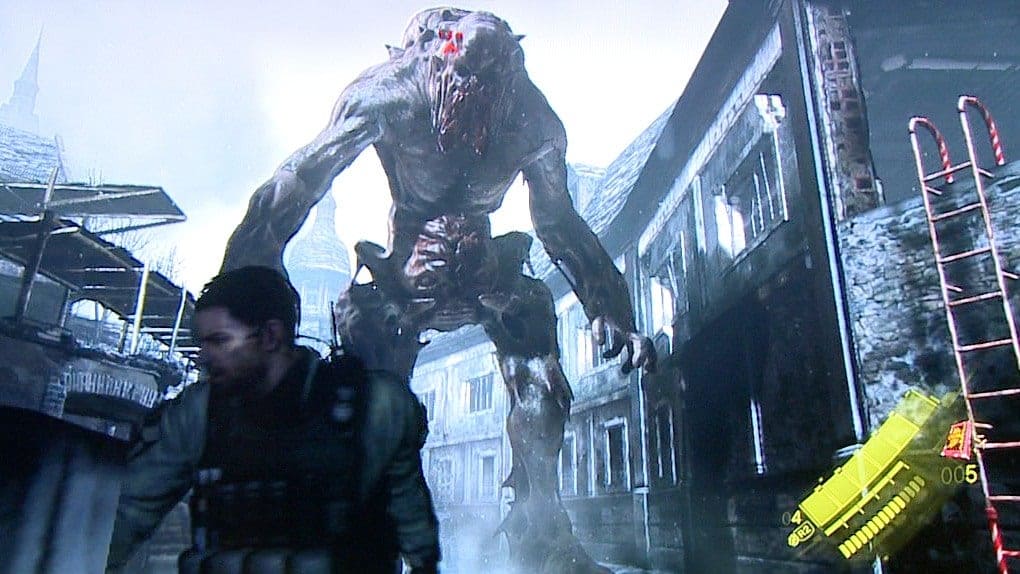
Resident Evil 6 is mostly memorable for being the game that would cause the Resident Evil team at Capcom to go back to the drawing board and reboot the franchise, and it also ends up being the easiest game in the franchise by a long-shot. Thanks to the series’ continued embrace of action game tropes instead of its survival-horror roots, Resident Evil 6 feels more like an arcade game cosplaying as a Resident Evil title rather than a genuine contribution to the series’ history as a mainline entry. That said, there’s still plenty of fun to be had with Resident Evil 6 (especially in co-op), but its lack of significant challenge makes it feel comparatively tame when stacked up against the rest of the franchise.
Even the game’s more horror-leaning campaigns can’t seem to correctly dial in the challenge, with most of the difficulty feeling artificial based on seemingly never-ending streams of enemies. Resident Evil 6‘s zombies are mostly cannon-fodder, and even its big bosses feel like little more than amusement park attractions on some haunted house ride. Resident Evil 6 cheapens and waters down the core franchise experience in favor of accessibility and action setpieces, and as a result it loses touch with what fans love about the series in the first place.
13. Resident Evil Village
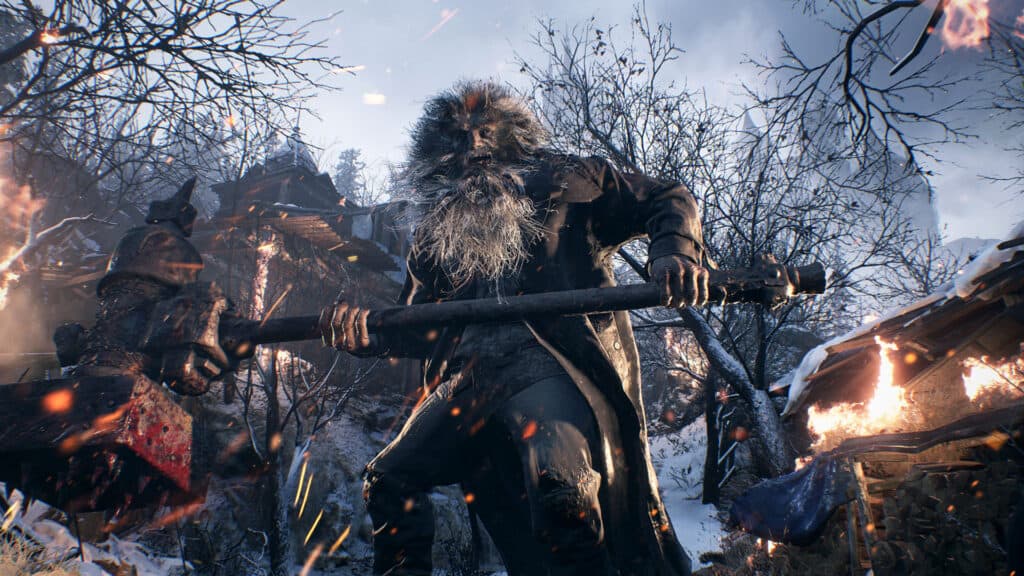
On the complete flip side from Resident Evil 6 is the latest mainline entry, Resident Evil Village. If there’s a case for how a Resident Evil game can be both incredibly fun and not too challenging, Village is the game that acts as Exhibit A. Part of the game’s fun factor and more even challenge comes from its adoption of Resident Evil 4‘s light RPG elements, with players able to upgrade weapons and health to a point that controlling Ethan morphs into something of a power fantasy in a series known for beating the player down. And, rather than have Ethan’s increasing power dampen the experience of playing the game and take the teeth out of the experience, Resident Evil Village instead just throws more and more challenging threats the player’s way once it knows you can handle them accordingly.
One area where Village still provides a significant challenge is with its bosses, as the Four Houses each represent some of the best and most intense encounters in the game thanks to requiring the player to use every tool in their arsenal. Resident Evil Village may equip the player with plenty of excellent, upgradeable weapons and ammo, but it’s not unusual to leave a boss fight with nothing more than scraps of ammo and the player’s health in the red. Resident Evil Village might be one of the less-challenging games in the series, but that’s only because it has its balance so keenly dialed in.
12. Resident Evil 5
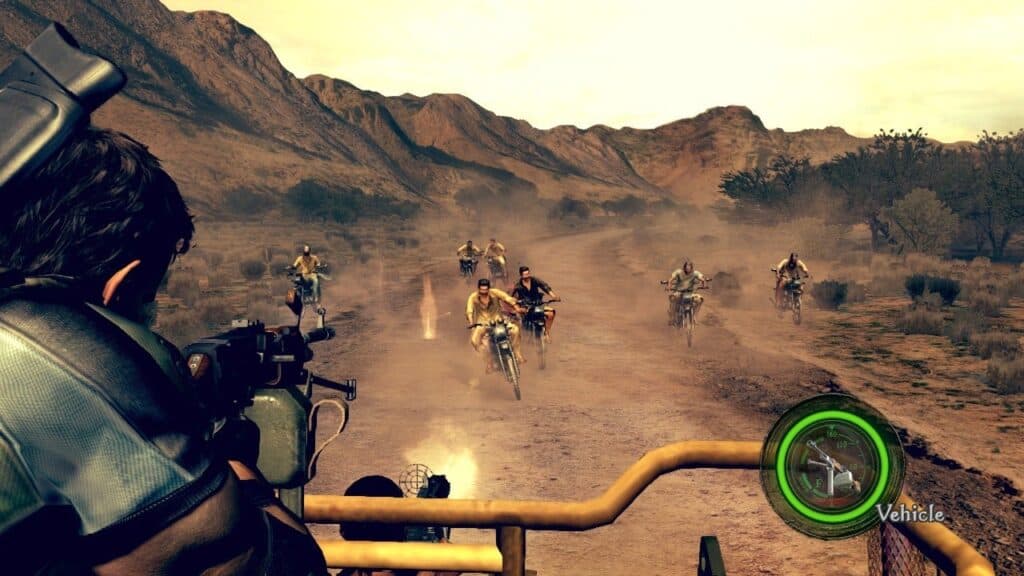
Like Resident Evil 4 before it, Resident Evil 5 will absolutely break a player down before they begin to substantially upgrade their weapons and get a grip on the game’s systems. However, also like Resident Evil 4, Resident Evil 5 does become a bit of a cakewalk after utilizing its RPG-lite systems to gain a significant advantage over the enemy. Add to that the ability to play in co-op, and you have one of the more easy games in the series, especially considering the ability of players to grind out Resident Evil 5‘s previous Chapters and upgrade weapons before advancing to later parts of the game. Still, like Resident Evil Village, Resident Evil 5 doesn’t sacrifice its relative lack of challenge for fun, but those early hours can be a little slow going and tough in comparison to the rest of the game.
Also like Village, Resident Evil 5 has some truly incredible boss fights that stretch players to their absolute limit and truly test skill and mastery of its systems. The on-vehicle sections (of which there are many more than Resident Evil 4) feel like some occasionally cheap and unfair difficulty spikes in a game that is easier than its predecessor in general, and the propensity for instant death in some of Resident Evil 5‘s quick-time events feels ridiculously unfair. Aside from these minor hiccups, though, Resident Evil 5 feels like it gets its difficulty balance down right and is the last of the “action Resident Evil” games to do so.
11. Resident Evil 4 (2005)
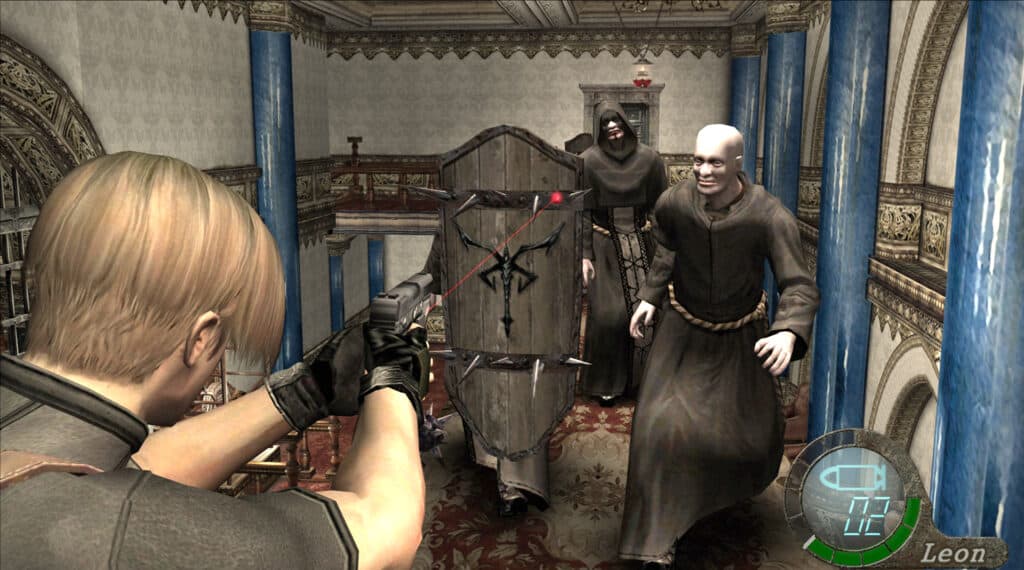
Resident Evil 4 might be the first game in the series to make the hard left turn into action-horror territory, but it also is the best of those games in terms of its challenge and balance. Basically, Resident Evil 4 is about as close as one can get to a perfect game in the series, and its “tough-but-fair” challenge is a large part of what makes the game so special. Leon is the equivalent of a superhero, and the inclusion of the ability to upgrade weapons and health makes what would otherwise be impossible, possible, but in no way does that work against the title and classify it as “easy”. On the contrary, Resident Evil 4 is a surprisingly difficult game that requires the player to carefully consider their positioning and environment thanks to the inability to move and shoot at the same time.
But what makes Resident Evil 4 have what could be considered a perfect balance is its ability to acclimate the player to its mechanics, resulting in a natural learning curve that sees the player improve in their abilities as the game begins to become more challenging. Resident Evil 4 is never “easy”. Instead, the player just keeps getting better at mastering its mechanics, and in the process grows to become capable of handling anything the game throws at them. Resident Evil 4 is one of the most important games ever made for many reasons, and its ability to teach the player about its mechanics and systems make it a masterclass in game design as well.
10. Resident Evil (1996)
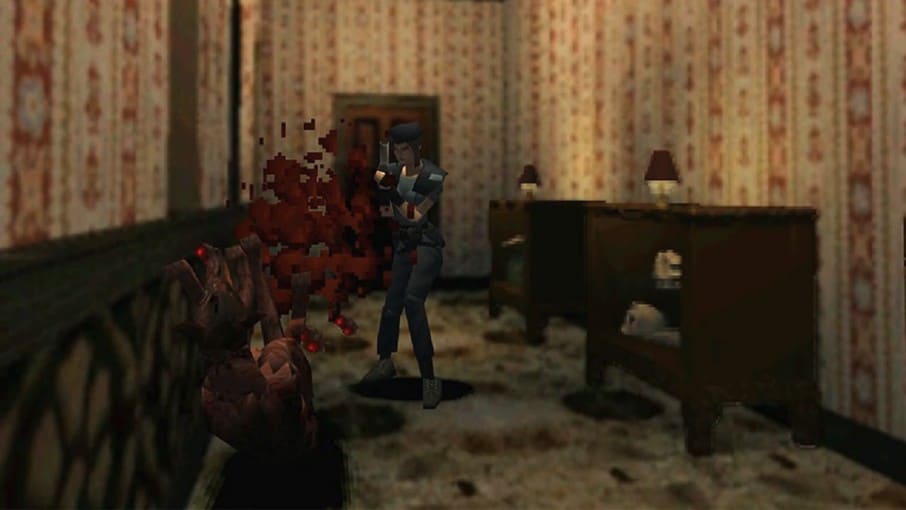
Trying to rank the original Resident Evil on a list that categorizes the series by its challenge is a difficult proposition for anyone who is a longtime fan of the series. A large part of the challenge in the original game in the series rests on the unfamiliarity and uniqueness of its gameplay, setting, and atmosphere, with the first playthrough of Resident Evil differing significantly from the 2nd, 3rd, or 4th. And what about those players that have beaten the game dozens of times and can clear both Chris and Jill’s campaigns in under 3 hours? When Resident Evil is as familiar to a player as Super Mario Bros. or The Legend of Zelda, how can one truly assess its difficulty? Even without dredging the depths of your memory banks, the original Resident Evil is still a fairly challenging game.
As the title that would single-handedly birth the survival-horror genre and coin its name, Resident Evil does a lot of things right. First and foremost, the original game in the series does not mess around when it comes to resource scarcity. Health and ammo are always at a premium, and even those familiar with the game can’t afford to rest on their previous experiences when coming face to face with the game’s tougher enemies and bosses. Essentially, Resident Evil can still see veteran players quickly end up on the iconic “You Died” screen, and that alone should tell you everything you need to know about how challenging the title still persists to be.
9. Resident Evil 2 (1998)
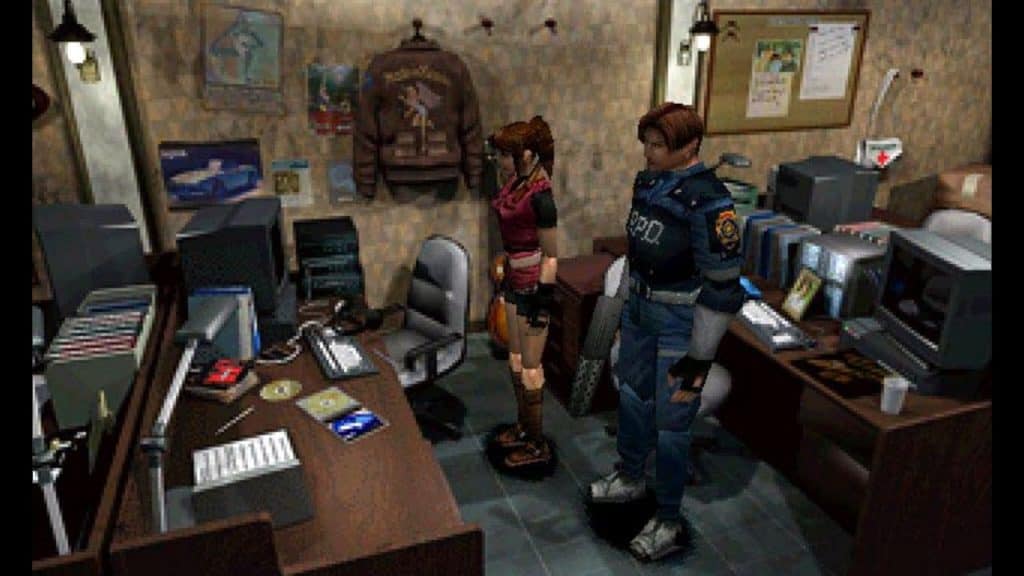
Everything that the first Resident Evil does is bigger, better, and badder in the sequel, and that statement carries over to the game’s enemies and challenge as well. Resident Evil 2 might give the player some advantages in terms of their available firepower and expansions to their inventory space, but for every advantage the player gets there’s an equally dire consequence. Enemies in Resident Evil 2 are plentiful, and thanks to advancements in technology between the first game and its sequel, more enemies than ever before can appear on-screen to quickly overwhelm the player. And then there’s the Lickers, the equally hideous and challenging replacement for the original game’s Hunters that skulk in the shadows and quickly strike before the player even knows they’re there.
Resident Evil 2‘s bosses are also a significant upgrade from the original, with the various forms of William Birkin’s “G” monster each representing some of the toughest fights in the game. What’s surprising about Resident Evil 2 are the sheer number of things that can instantly kill the player in a single hit. And somehow, despite those seemingly unfair odds, the player never has less than everything they need to tackle any of the obstacles Resident Evil 2 throws at them. Many longtime fans consider Resident Evil 2 and its remake to be the peak of the series, and though that favoritism may be the result of the game’s story, it’s also arguably a result of the game being simultaneously harder and more fun than the original.
8. Resident Evil (2002)
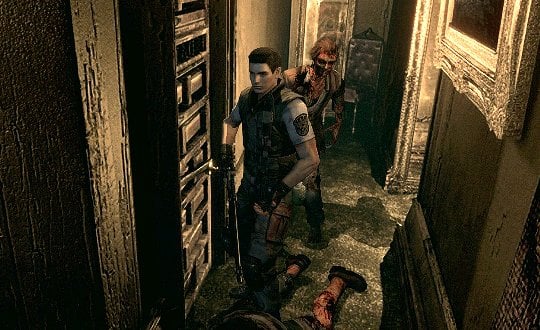
The original Resident Evil is already a challenging game, but director Shinji Mikami (returning to directorial duties after switching to the role of producer for the original’s sequels) would have an interesting challenge ahead of him in remaking the game and helping it be scary for both newcomers and seasoned pros. Thankfully, Mikami would fundamentally understand what makes Resident Evil tick, elevating its remake to be one of the best games in the series and one of its most challenging. A large part of what makes 2002’s Resident Evil significantly more challenging than the first game are the ways that it subverts player expectation and toys with nostalgia and memory, but there’s one inclusion that stands above all others to make the remake much more challenging than the original.
I’m talking, of course, about the Crimson Heads. While players could defeat zombies and clear out a room in the original game (creating a safe space to easily traverse through in the process), the addition of the Crimson Heads in the Resident Evil remake dashes those hopes almost completely. Zombies now must have their head completely destroyed or be burned to a crisp in order to not reanimate, requiring the player to use up valuable inventory space on a lighter and a container of kerosene. And use up that space you must, as an encounter with a Crimson Head is both as deadly and as terrifying as any of the bosses that appear throughout the series. By making what should be safe, unsafe, 2002’s Resident Evil throws a major difficulty spike players’ way.
7. Resident Evil 3 (2020)
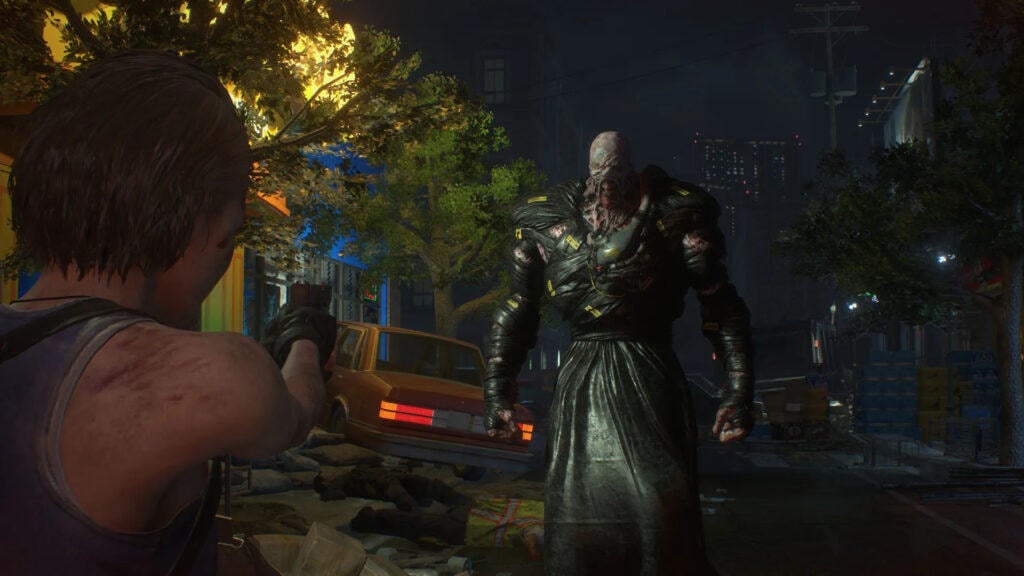
The original Resident Evil 3: Nemesis would end up being the most challenging game in the original PS1 trilogy of titles in the franchise, but its remake is significantly easier for a number of reasons. For starters, players no longer have to make split-second decisions regarding how to fight or flee from Nemesis when he shows up. Instead, each of Nemesis’ appearances in the remake are entirely scripted setpiece events. They’re no less scary, to be sure, but the player does at least have the option to replay them time and again in the event that they fail. Failure in Resident Evil has always been meant to feel catastrophic (hence, why players’ options to save are limited), but Resident Evil 3‘s checkpoints are so plentiful that it’s possible to use a “trial and error” approach to the Nemesis fights if need be.
Additionally, Jill has a substantial amount of firepower in comparison to both the original and the other Resident Evil remakes. It’s not unheard of to end up with a surplus of resources in the Resident Evil 3 remake, and it seems like more ammo is never that hard to come across. That said, the higher difficulties in Resident Evil 3 (specifically, Nightmare and Inferno modes) can truly test the player’s knowledge of the game and mastery of its mechanics. And, lest we forget, the horde attack in the hospital when playing as Carlos ranks among the entire Resident Evil series’ most challenging moments.
6. Resident Evil 7: Biohazard
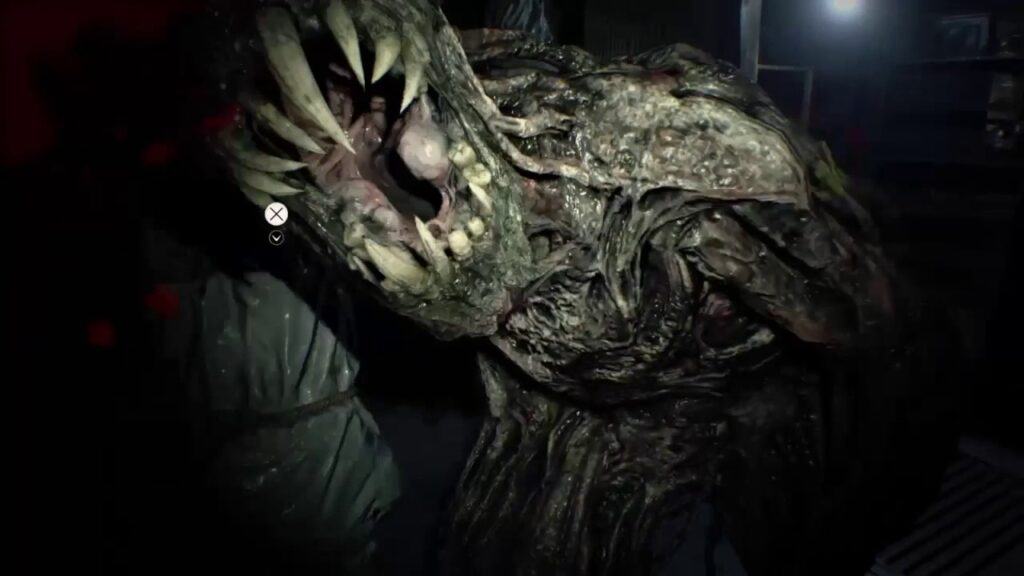
Following the series’ dropping of the proverbial ball in Resident Evil 6, Resident Evil 7 would see the franchise return to its roots in spectacular fashion to deliver one of the scariest and most challenging Resident Evil games in years. Where Resident Evil 7 succeeds is in scaling proceedings back to the original setup, with players navigating a mysterious house and having to truly scavenge for even the slightest leg-up over the enemy. The Molded are an exciting stand-in for the traditional rank-and-file zombie enemies, and the amount of ammo necessary to take one down really makes the player stop and consider whether it’s better to engage or to flee and live to fight another day.
The standout highlight of Resident Evil 7, though, are its bosses. Facing off against each member of the deranged Baker family (and, eventually, the mysterious Eveline) represents some of the best boss fights in the entire series. Each of these encounters will see the player exhaust most of the resources they’ve collected up to that point, and the relative lack of replenishments around each of the arenas makes every fight feel like it could be the player’s last. Ethan Winters is an atypical protagonist for the series by being a regular guy, and it’s a perfect allegory for the player controlling him who has to fight for every inch in Resident Evil 7‘s story.
5. Resident Evil 3: Nemesis (1999)
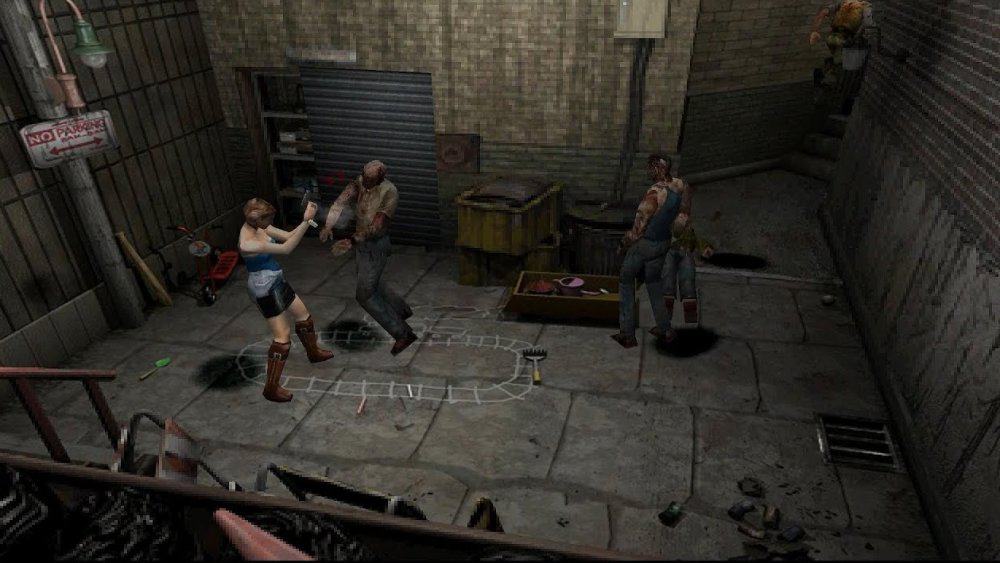
Despite giving the player some serious firepower in comparison to the first two games in the series, Resident Evil 3: Nemesis just might be the most challenging of the original PS1 trilogy. Players once again assume the role of Jill Valentine, and even with the events of the game running concurrent to Resident Evil 2 (and even reusing some of the same environments and assets from that game), Resident Evil 3 keeps players constantly on their toes through the inclusion of the titular Tyrant model ceaselessly hunting Jill Valentine. Even with Jill having survived the initial Resident Evil, you never truly feel like you’re ready for Nemesis to show up in Resident Evil 3, resulting in each of his appearances striking dread into the heart of all but the most seasoned players.
Even the addition of being able to craft your own ammo does little to dissuade the tension that prevails throughout Resident Evil 3: Nemesis, as the resources necessary to craft ammo aren’t nearly as plentiful as the game would have you beleive and the machine to craft it taking up valuable inventory space. The Nemesis represents the first Terminator-like enemy in the Resident Evil series (something the franchise would return to multiple times throughout the years), and surviving an encounter with it makes every momentary victory feel like a massive success against an indestructible force.
4. Resident Evil 2 (2019)
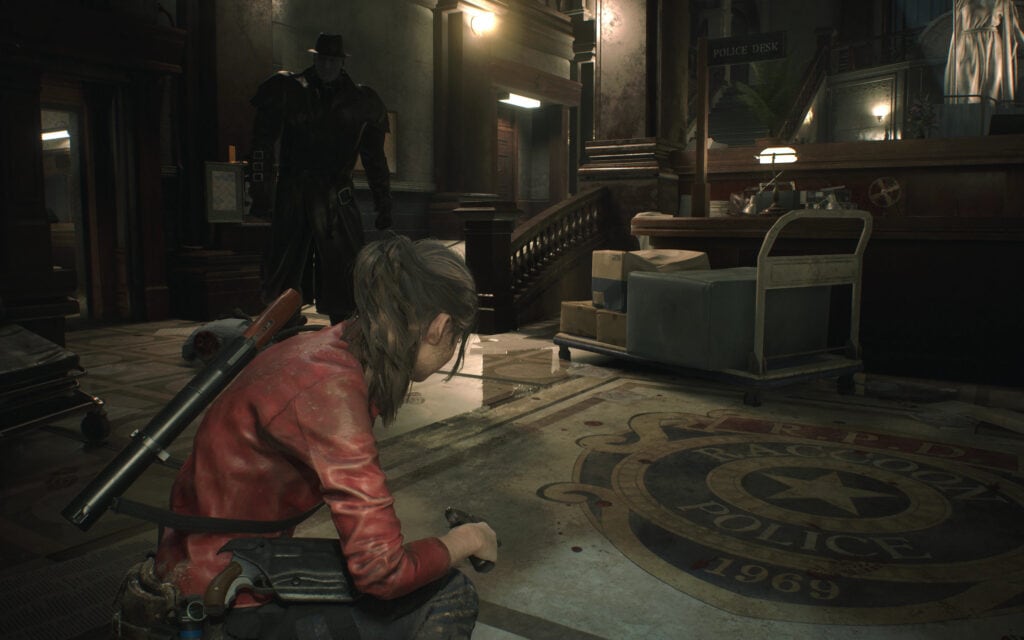
Like the 2002 Resident Evil remake before it, 2019’s Resident Evil 2 is an example of how to perfectly approach remaking a classic game. Resident Evil 2 toys with players’ nostalgia for the original, being a completely faithful recreation until it isnt’ by throwing the ultimate curveball in the game’s first half. Mr. X may have been a component of the B Game for either character in the original, but he shows up in the base game in the remake. The presence of Mr. X completely recontextualizes the way players have to go about navigating the Raccoon City Police Department after he shows up, and the telltale “THUD” of his footsteps on the marble flooring all but signals the player’s impending doom.
Normal mode in the Resident Evil 2 remake is doable, even if it is challenging the first time through (thanks to a lack of familiarity with its new scares and enemy placements), but Hardcore difficulty is truly where things turn. More than just limited resources and more powerful enemies, playing through both Claire and Leon’s campaigns (and the B Games) on Hardcore sees Resident Evil 2 reach the height of its challenge to become one of the most difficult games in the series. And, if players are hoping to unlock the best rewards as a result of completing these higher difficulties with the best ranking possible, they have to do so quickly and without using First-Aid Sprays.
3. Resident Evil 4 (2023)

You’d be forgiven for assuming that the remake of Resident Evil 4 is somehow easier than the original thanks to the newfound ability to move and shoot at the same time, but you’d also be dead wrong (pun intended). To make up for the significant way that moving-and-shooting changes Resident Evil 4‘s core gameplay loop and balance, the remake introduces the need to parry enemies using the Combat Knife. This change has two major effects. The first is that the Knife is now breakable and needs to undergo repairs at each of the game’s mysterious merchants in order to remain effective as a last line of self-defense. The other is that enemies are infinitely more aggressive than they are in the original, quickly getting in Leon’s face and overwhelming the player without mastery of the parry mechanic.
And, just like Resident Evil 2 and Resident Evil 3 before it, the remake of Resident Evil 4 introduces a slew of new difficulty options that radically change the experience. Once again, beating the game on Normal mode is challenging, but doable. However, as the player ratchets up the difficulty into Hardcore and then Professional, the game changes from being challenging to being nigh-impossible. Even the most heavily equipped players with fully upgraded weapons will struggle to complete the game on higher difficulties with a decent rating, making Resident Evil 4‘s top-tier challenges some of the most demanding in the series and only fit for hardened RE4 veterans.
2. Resident Evil 0
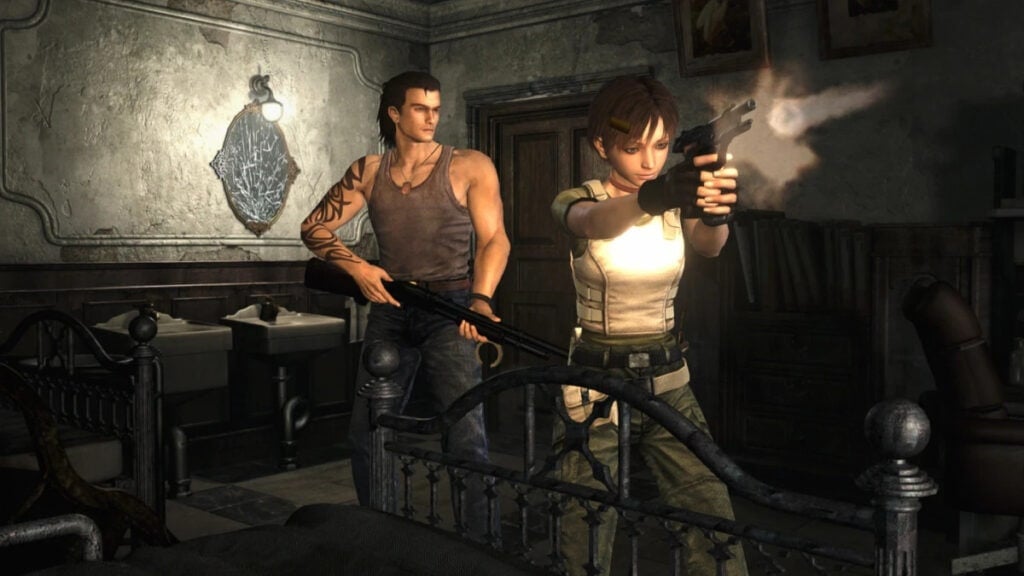
A list that ranks games using their challenge as the main criteria often misses out on what’s arguably the most important factor in a game’s success and longevity — fun. While most of the challenging games on this list still retain the core qualities that make the Resident Evil franchise so successful and enduring, Resident Evil 0 is one of the few titles that is both hard and, to many fans, simply not that fun. One of the more polarizing games in the series, Resident Evil 0‘s dual-protagonist system (where players actively swap-between and control both instead of needing to play two separate campaigns) is something fans seem to either love or hate. It also happens to be one of the main factors contributing to the game’s difficulty.
Needing to swap items between Rebecca and Billy can often become a tedious game of fetch between the two and require the player to backtrack long distances. And, in a series like Resident Evil where players are often better off running from enemies than fighting them, needing to head back into dangerous areas repeatedly results in Resident Evil 0 having maybe more cheap and accidental deaths than any other game in the franchise. Resident Evil 0‘s dual-character setup is an interesting one, and it certainly makes the game unique, but its challenging enemy types and inventory swapping make it feel needlessly tedious and difficult at times.
1. Resident Evil – CODE: Veronica
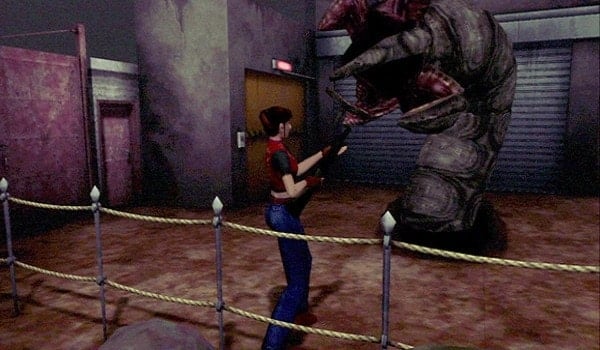
Even though CODE: Veronica has a legitimate claim to being the hardest Resident Evil game, in no way does that diminish from its importance or fun as a franchise title. In fact, CODE: Veronica is arguably both the hardest and the most underrated game in the franchise, with so many aspects of its gameplay improving on the original trilogy and it helping to set up the pivot the series took with Resident Evil 4. Claire has some new abilities that help her survive amidst CODE: Veornica‘s substantial challenge, but enemies are plentiful and also sturdy. The amount of ammunition necessary to take down a rank-and-file zombie is almost shocking, and the game establishes early on that players can’t simply brute force their way through its challenge using careful resource management.
Additionally, CODE: Veronica‘s boss fights are perhaps the hardest in the entire series, with several of the major encounters boiling down to battles of attrition that see the player barely emerging intact. Both Claire and Chris Redfield seem to be struggling to survive throughout the game’s rollercoaster of a plot, and the gameplay goes a long way toward making the player feel every beat of their struggles both apart and together. It may be the hardest game in the franchise, but it’s also a great Resident Evil game in its own right and none of its challenge feels superficial or unfair.
The image featured at the top of this post is ©Resident Evil gameplay screenshot.
